About Fasica
Here you get all the Information about the fascial system. The first part is to unterstand what Fascia actually is and which tissues belong to the fascial network in the Human body.
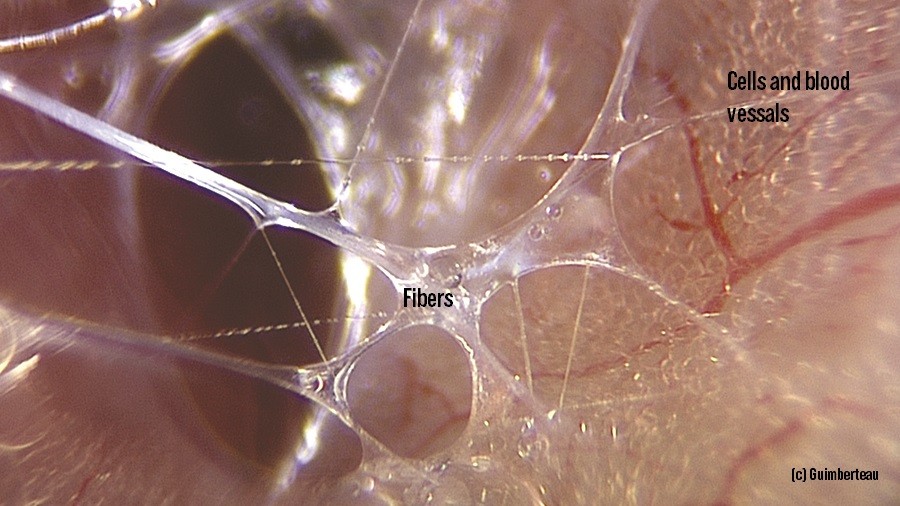
Definition:
Fascia is term used very differently in various professions and perspectives. In 2015 the leading researchers in the field decided after quite some discussion on this definition:
A fascia is a sheath, a sheet, or any other dissectible aggregations of connective tissue that forms beneath the skin to attach, enclose, and separate muscles and other internal organs.
https://www.fasciaresearchsociety.org/fascial_nomenclature.php
a more detailed Definition about the fascial system:
The fascial system consists of the three-dimensional continuum of soft, collagen containing, loose and dense fibrous connective tissues that permeate the body. It incorporates elements such as adipose tissue, adventitiae and neurovascular sheaths, aponeuroses, deep and superficial fasciae, epineurium, joint capsules, ligaments, membranes, meninges, myofascial expansions, periostea, retinacula, septa, tendons, visceral fasciae, and all the intramuscular and intermuscular connective tissues including endo-/peri-/epimysium. The fascial system surrounds, interweaves between, and interpenetrates all organs, muscles, bones and nerve fibers, endowing the body with a functional structure, and providing an environment that enables all body systems to operate in an integrated manner.
https://www.fasciaresearchsociety.org/fascial_nomenclature.php
Different Layers of Fascia:
The definition of the “fascial system” shows that fascia is so much more than the old understanding of the 3 different layers of fascia. But here still a quick summery of the 3 layers, before we broaden this perspective.
Superficial fascia
- The superficial fascia is the outermost layer of fascia located just below the skin. It is composed of loose connective tissue and adipose tissue (fat), which helps insulate the body and store energy. It also contains nerves, blood vessels, and lymphatics that supply the skin and subcutaneous tissues.
Fascia profunda (deep fascia):
- The fascia profunda is a dense, fibrous layer of connective tissue that lies beneath the superficial fascia. It is more dense and forms a sheath around muscles, bones, and joints, providing support and protection. It also transmits forces generated by muscle contractions, allowing for efficient movement.
Visceral fascia
- The visceral fascia is a thiner layer of connective tissue that surrounds and supports the internal organs (heart, lungs, liver, and intestines).
It helps to anchor the organs in place and provides a pathway for nerves, blood vessels, and lymphatics to reach them.
The new view on fascia
Take a look at these pictures taken by Jean-Claude Guimberteau. Thanks to him we have amazing in vivo pictures of the human fascial system:
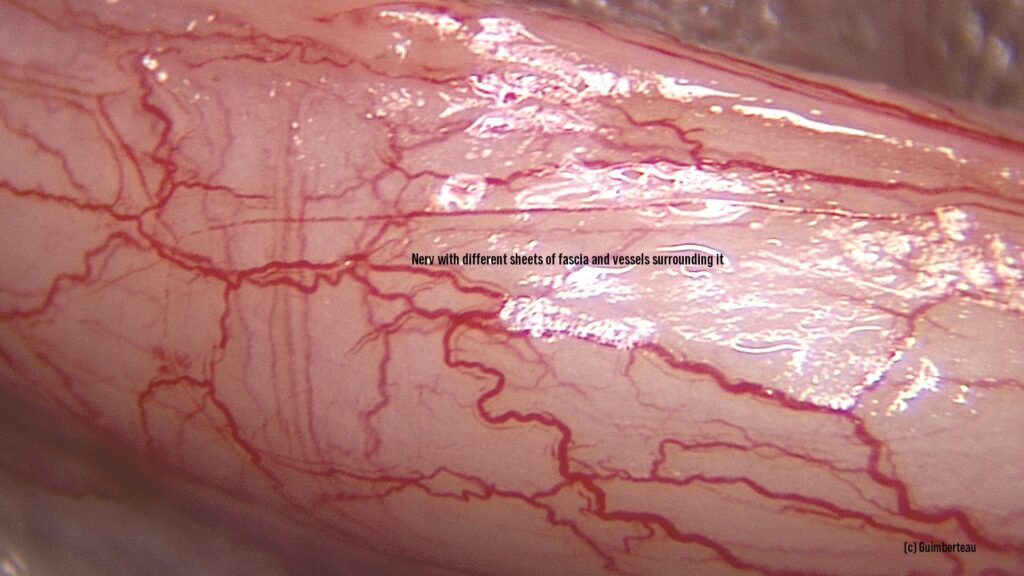
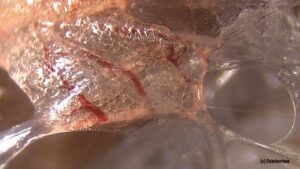
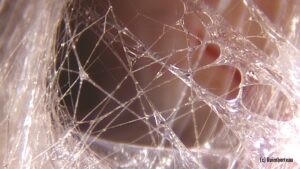
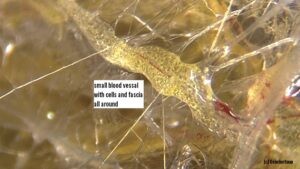
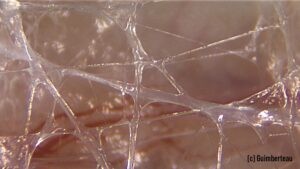
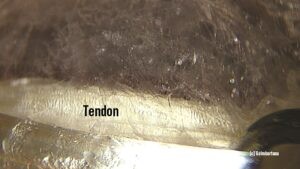
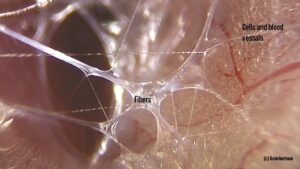
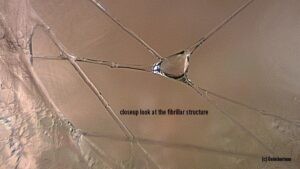
Guimberteau’s theory emphasizes the interconnectedness and omnipresence of the body’s fascial system. This broader understanding gets support from other researchers in the field.
He describes the fascia as a continuous network of fibers that envelops and interconnects every cell, tissue, and organ in the body. It can’t be clearly separated.
This interconnectedness allows for the transmission of forces and information throughout the body, facilitating communication and coordination between different systems.
